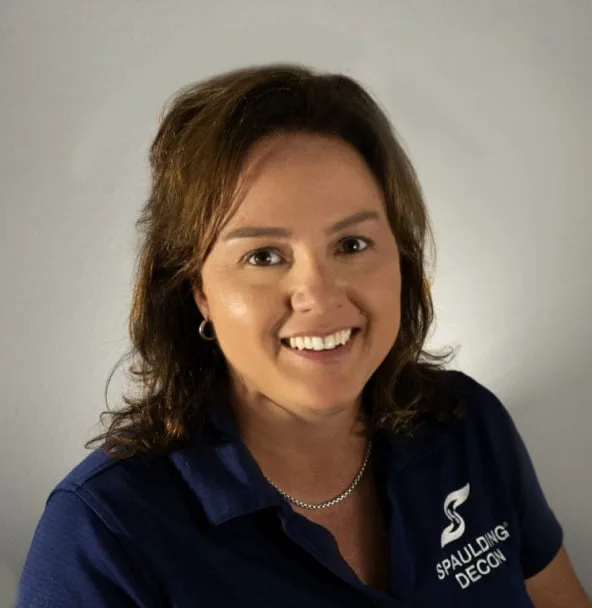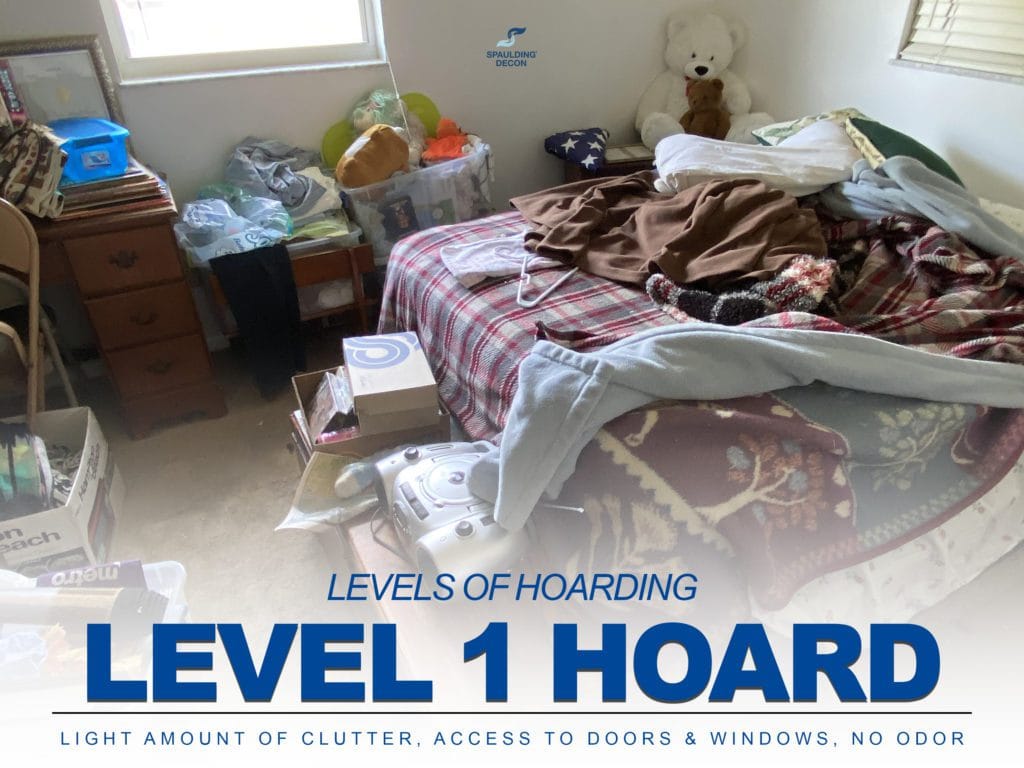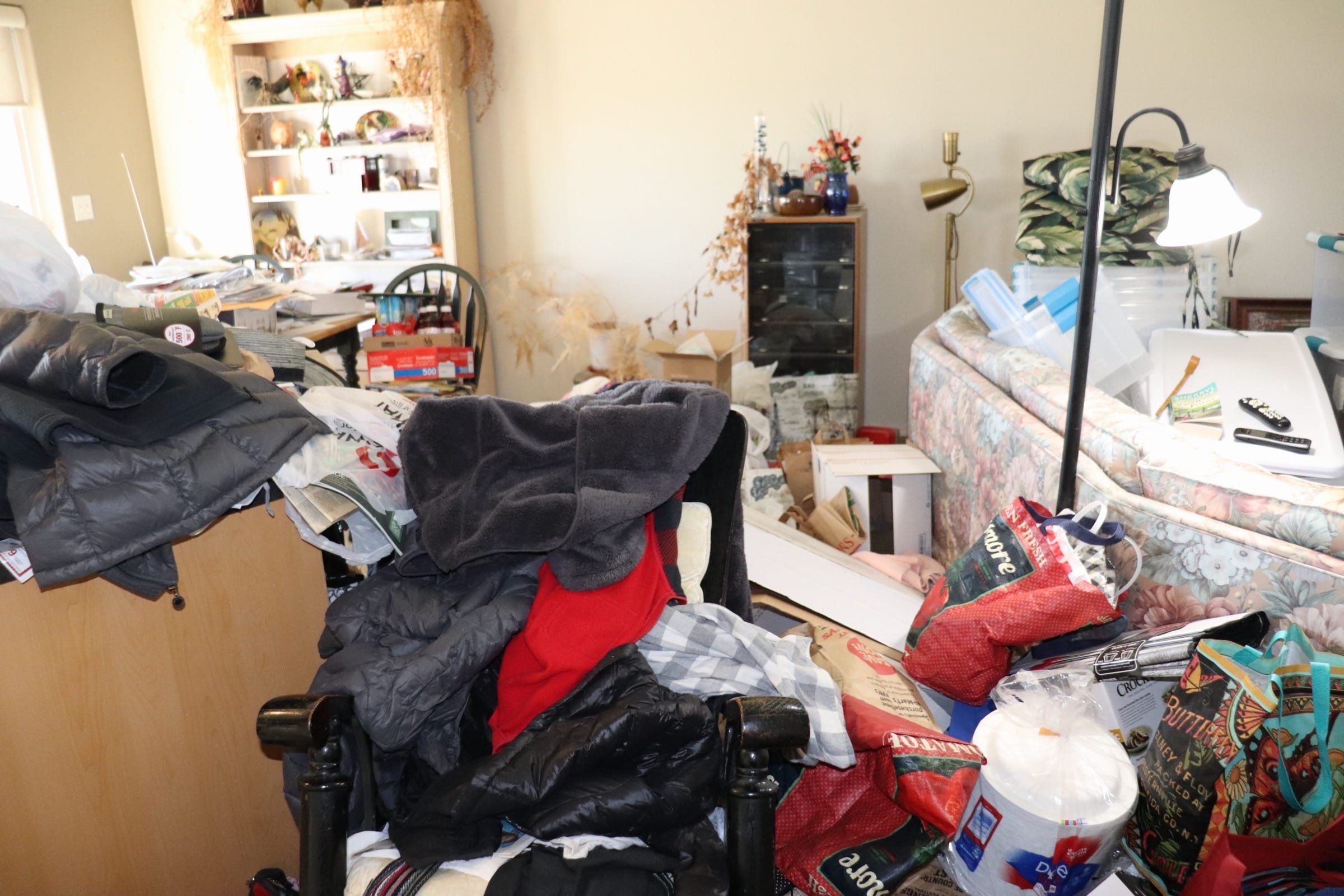Last updated: October 2025
Author: Laura Spaulding, Founder and CEO, Spaulding Decon
Also called the 5 stages of hoarding, these levels range from mild clutter to uninhabitable conditions with associated biohazards that can pose health and safety risks.
Hoarding disorder is a mental health condition applied to a person who experiences persistent difficulties in discarding possessions, leading to unsafe clutter. Mental health and clean up professionals often use the term “5 levels of hoarding,” which starts with mild clutter (Level 1) and ends in severe, uninhabitable conditions (Level 5).
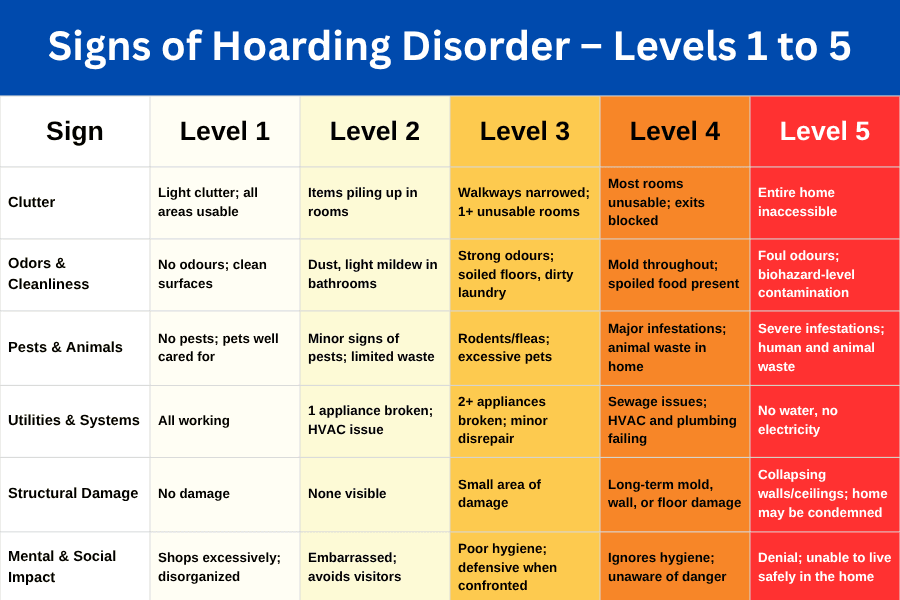
What is Hoarding Disorder?
Hoarding disorder is classified as a serious mental health condition. On the one hand, people who have it collect items to such an extent that the act becomes an unhealthy obsession. On the other hand, people with it experience severe anxiety when discarding these items. Over time, this type of behavior can lead to unsafe living conditions, social isolation, and even legal or financial troubles.
Did you know? Hoarding disorder was officially recognized as a mental health condition in 2013 with its inclusion in the DSM-5. According to the American Psychiatric Association (APA), approximately 2.6% of Americans live with it.
Hoarding: The 5 Levels – quick explainer with Laura Spaulding
Speaker: Laura Spaulding, Founder & CEO of Spaulding Decon
Hoarding disorder is a mental health condition marked by persistent difficulty letting go of possessions. In this short video, Laura walks through the five levels – from mild clutter to homes that are completely unusable – so you can quickly gauge risk and decide what help is needed.
- Level 1 (Mild): Living spaces are cluttered, but rooms still function as intended.
- Level 2 (Moderate): Clutter is more noticeable; some areas start to lose functionality.
- Level 3 (Severe): Clutter significantly impairs use of rooms; navigating becomes difficult.
- Level 4 (Very severe): Widespread clutter with serious sanitation or structural risks.
- Level 5 (Extremely severe): The home is overwhelmed by clutter and effectively unusable.
If exits are blocked, sanitation is compromised, or structural issues are present, treat it as urgent and get professional help.
Need discreet, professional help at any level? Call 866-726-2316.
At-a-Glance Hoarding Levels Chart
There’s no one-size-fits-all approach when it comes to dealing with the results and impact of hoarding. However, mental health professionals, hoarding cleanup specialists, and social workers often refer to the five-level scale to assess its severity.
Each level has its own risks, challenges, and cleanup needs, along with therapy and treatment for the affected individual. It is widely accepted that the earlier hoarding is identified, the easier it is to manage.
Related resource: Is your loved one showing signs of hoarding? Learn about the 7 Warning Signs Someone You Love Has a Hoarding Problem.
Use this quick chart to spot any one of the five stages of hoarding and to decide when to call a professional.
| Stage | Common Indicators | Health & Safety Risks |
|---|---|---|
| Stage 1 Severity: Minimal Clutter | Home appears tidy, all exits accessible, but storage spaces are overflowing. | No immediate risks, occasional misplaced items or excessive shopping habits. |
| Stage 2 Severity: Mild Clutter | Clutter accumulating in areas, some difficulty organizing. Walkways remain clear, but excess items pile up in rooms. | Increased fire hazards near heat sources. Dust and allergen buildup begin. |
| Stage 3 Severity: Moderate Clutter | Clutter begins blocking exits or key areas, odors present, and pest infestations begin. Some rooms are difficult to use properly. | Rodent/insect activity, sanitation issues arise, mold growth, fire hazards increase. |
| Stage 4 Severity: Severe Clutter | Structural damage, mold presence, severe sanitation issues. Multiple rooms become unusable. Exits may be completely blocked. | High risk of respiratory issues, fire hazards, toxic mold exposure, and bacterial infections. Biohazards like animal/human waste present. |
| Stage 5 Severity: Extreme Clutter | House is unlivable: no running water or electricity, severe biohazards, blocked exits, and extreme structural damage. | Life-threatening health risks: airborne bacteria, toxic mold, severe fire hazards, and potential structural collapse. Emergency intervention required. |
Tip: If the property’s exits are blocked, strong odors are present, or there is a pest infestation, treat the case as Level 3 or higher and get professional help.
The 5 Levels of Hoarding (Detailed)
Below is a more detailed explanation of each of the five levels of hoarding. You’ll learn about early warning signs, potential health and safety risks, and discover actions you can take to prevent harm.
Level 1 hoarding: Minimal clutter and early warning signs
At this stage, hoarding goes beyond simple collecting. The home might look relatively clean and functional, but you’ll see signs of excessive accumulation. Storage spaces, closets, cabinets, and sheds, are typically filled to the brim and organization becomes difficult. The affected person may regularly shop for items they don’t need and struggle to part with even the most minor belongings.
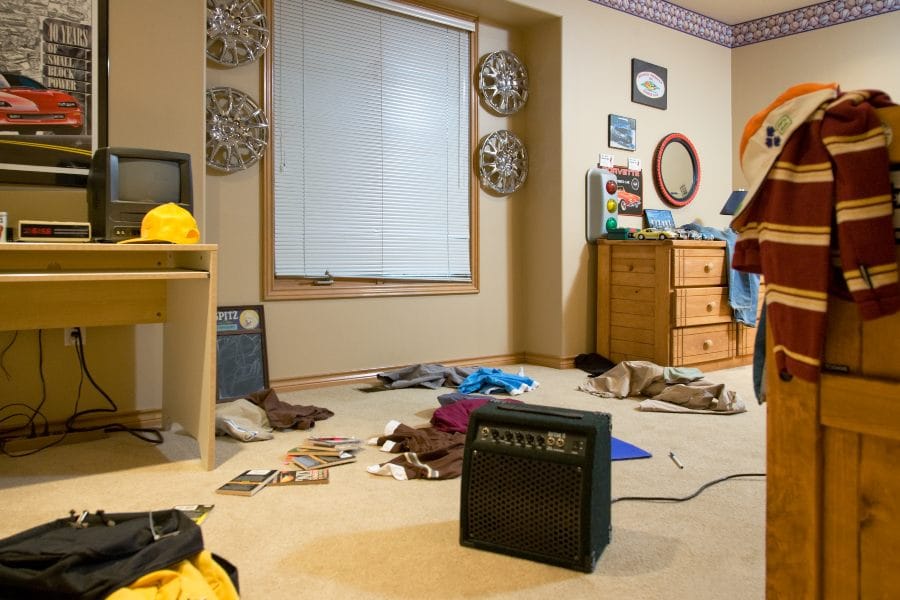
At Level 1, the condition may not be obvious to outsiders, but emotional attachment to possessions and early compulsive buying patterns often exist.
Common signs of Level 1 hoarding:
- Light clutter with no major obstructions
- Storage spaces are overflowing
- No strong odors or sanitation concerns
- All exits remain accessible
- Frequent shopping for unneeded items
Steps you can take during this stage:
- Start decluttering one area at a time
- Encourage reduced shopping habits
- Offer organizational support
Level 2 hoarding: Cluttered living spaces and social withdrawal
At this stage, clutter has spread from storage areas into living spaces. Walkways begin to narrow and cleaning becomes difficult. Many people experiencing Level 2 hoarding begin to avoid visitors due to embarrassment, stress, or anxiety about the condition of their home.
Shame often becomes a barrier to seeking help at this level, which can lead to increasing isolation.
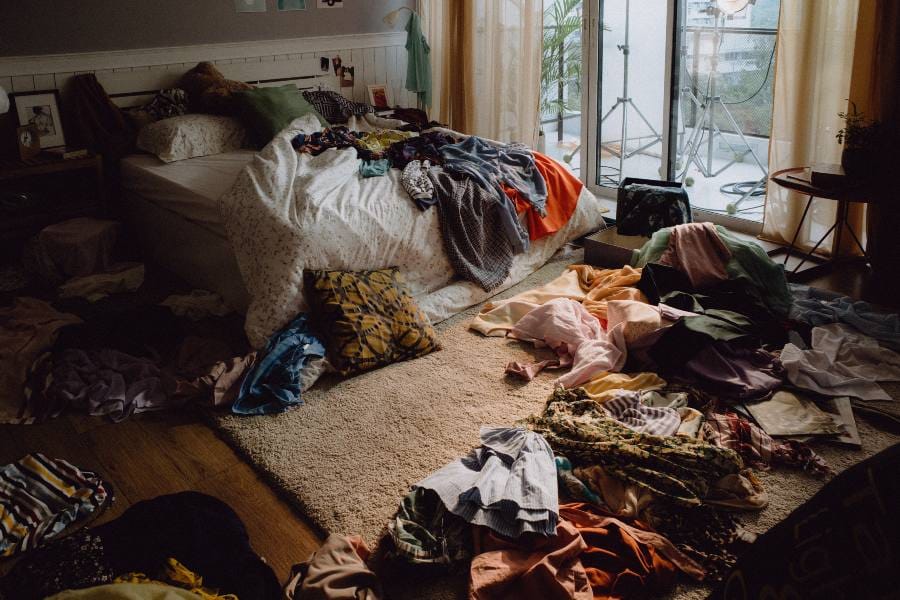
Common signs of Level 2 hoarding:
- At least one exit is partially or fully blocked
- A major appliance is broken or unused
- Ventilation issues (e.g. heating or cooling obstructed for 6+ months)
- Light mildew in bathrooms or kitchens
- Clutter in walkways or living areas
Steps you can take during this stage:
- Address the clutter one room at a time
- Speak with compassion and avoid judgment
- Involve an organization professional
Feeling Overwhelmed? Our trained professionals can assist with hoarding cleanup at any stage. Call now!
Level 3 hoarding: Strong odors, pests, and health hazards
At this stage, hoarding becomes highly noticeable and can affect the person’s physical health, mental wellbeing, and day-to-day living. Individuals may rationalize the clutter and resist outside help, often becoming defensive when approached.
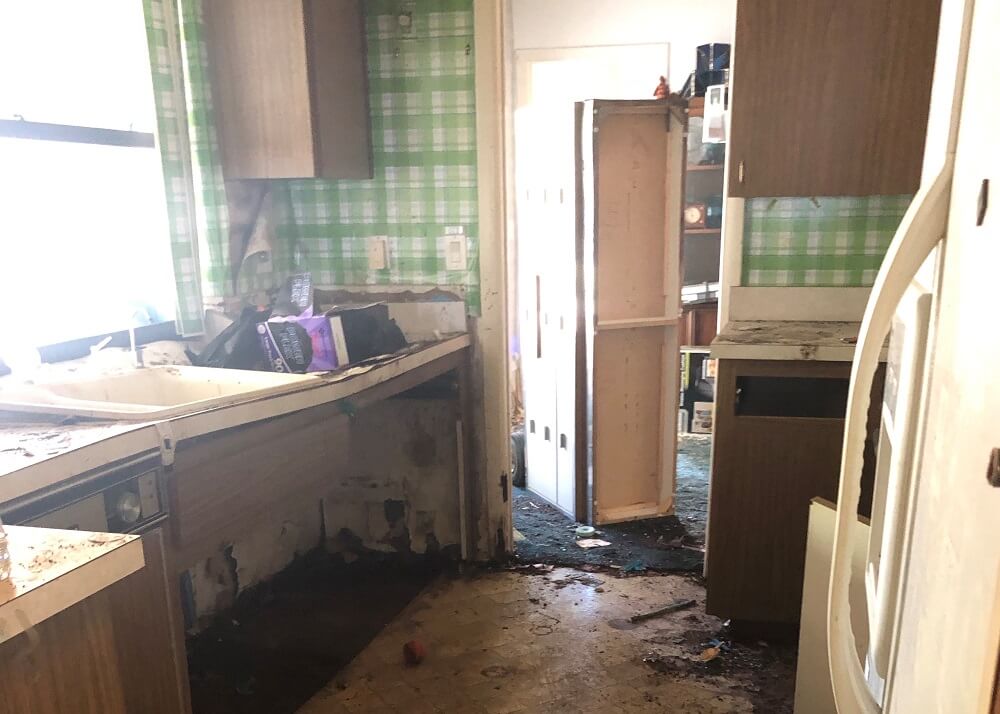
Level 3 often marks the point where hygiene and pest issues begin to pose serious health concerns. Emotional distress is common, and intervention becomes more urgent.
Common signs of Level 3 hoarding:
- Hoarded items are now accumulating outside the home
- Two or more household appliances are broken and unrepaired
- One area shows early signs of structural damage
- Excessive number of indoor pets
- Visible rodent, flea, or spider infestation
- Narrowed hallways or blocked access
- At least one unusable bedroom or bathroom
- Strong odors, soiled flooring, and accumulated waste
Steps you can take during this stage:
- Begin cleanup in manageable phases
- Compassionate intervention is crucial
- Work with mental health professionals
Level 3 hoarding poses health risks. Get expert assistance today! Call 866-726-2316.
Level 4 hoarding: Structural damage, sewage, and biohazards
By this point, the home becomes hazardous. The person may go without bathing or healthcare, and multiple rooms are unusable.
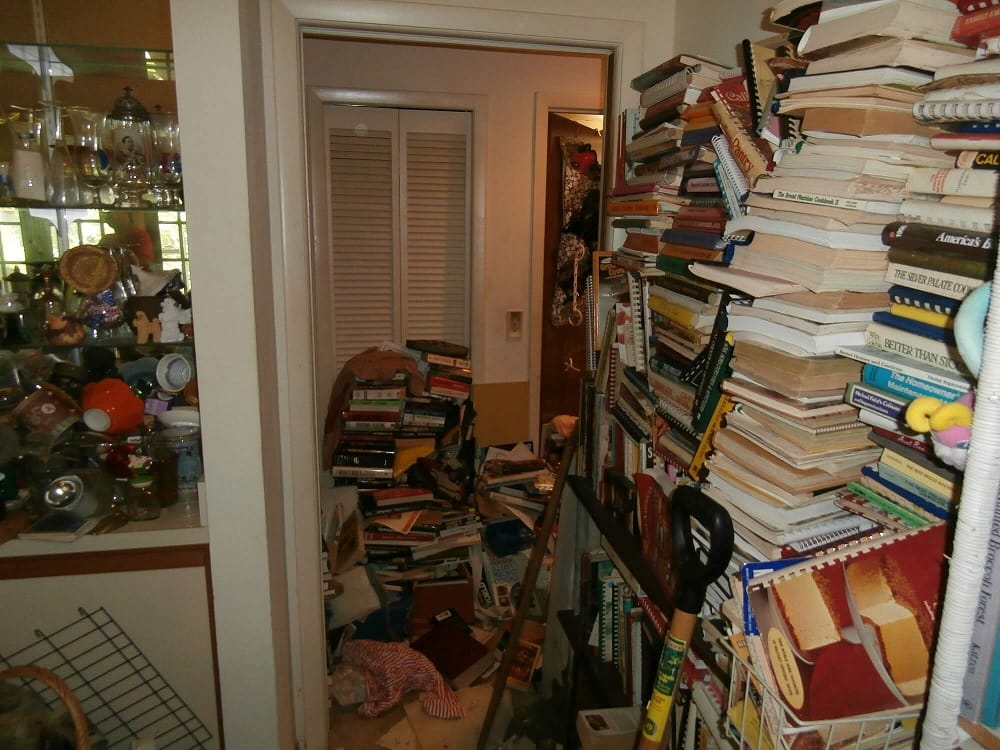
Common signs of Level 4 hoarding:
- Structural damage (6+ months old)
- Severe mold and mildew
- Backed-up plumbing or sewage
- Rotting food and excessive waste
- Multiple pest infestations
- Two or more exits blocked
Steps you can take during this stage:
- Act quickly for safety
- Contact a hoarding cleanup specialist
- Work with therapists and social services
Dangerous hoarding conditions require professional remediation. Call 866-726-2316 for expert biohazard cleanup.
Level 5 hoarding: No utilities, severe fire hazards, and crisis conditions
Homes at this stage are often uninhabitable. Hoarders may deny the severity and require multi-agency intervention.

Common Signs of Level 5 Hoarding:
- Severe structural damage
- No electricity or water
- Human and animal waste
- Clutter covering all surfaces
- Fire hazards from exposed heat sources
Steps you can take during this stage:
- Contact emergency biohazard cleanup specialists
- Ensure personal safety first
- Begin therapy within 72 hours
Emergency hoarding cleanup available 24/7! Call 866-726-2316 today.
Hoarding Is a Mental Health Issue, Not Just a Cleanup Job
Many people think hoarding is about laziness or messiness. It’s not. It’s deeply connected to trauma, anxiety, grief, and sometimes neurological conditions. That’s why a cleanup alone isn’t the full solution. Emotional support, therapy, and community connection are essential.
Some of the support options you can explore include:
- Cleanup and therapy collaboration
- Cognitive Behavioral Therapy (CBT)
- Peer support groups
- In-home therapy and coaching
How to Help a Hoarder Who Refuses Help (Compassion-first Scripts)
Your goal in helping a hoarder should be to reduce their fear and shame, restore a sense of control, and make a small, safe first step.
Good to know: Spaulding Decon’s teams are compassion-trained and certified for biohazard cleanup. We work at your pace, use unmarked vehicles on request, and never discard anything without consent.
What to say:
- Start with safety: “I care about your safety. Could we work together to clear the exits first so it’s easier to move around?”
- Offer control and consent: “You choose what stays or goes. I can be the extra set of hands, nothing leaves without your say-so.”
- Lower the bar: “Would 15 minutes on the kitchen counter help us get started? We can stop whenever you need a break.”
- Preserving memories: “Can I take photos of sentimental items so we keep the memory even if we let the item go?”
- Make it reversible: “Let’s create a ‘maybe’ box. If you’re unsure, the item will go there and we’ll review it later, no pressure.”
- Invite professional, no-pressure help: “Would it help if a Spaulding Decon specialist did a quick safety check, no throwing anything away, just a plan for exits and the bathroom?”
Do’s and don’ts for caregivers and friends:
- Do: Use calm, non-judgmental language. Agree on a tiny, specific goal. Schedule short sessions with breaks. Celebrate any progress.
- Don’t: Perform surprise cleanouts, give ultimatums, or make shaming comments. Also don’t move or discard items without consent.
When to call us: Get in touch with us immediately if there are blocked exits, strong odors, pests, mold, sewage, or human/animal waste as this is a health and safety issue. At Spaulding Decon, we are certified to remediate biohazards and can stabilize the home quickly and discreetly. Call 866-726-2316.
How to Clean a Hoarder’s House (Step-by-Step With Spaulding Decon)
If you suspect Level 3 or higher conditions – or any biohazard – pause and call Spaulding Decon. We’re trained to work compassionately and follow OSHA-compliant safety protocols.
- Safety assessment (no-judgment walkthrough): We check egress, utilities, odors, pests, water damage, sharps, and biohazards. Together, we set a consent-based plan so the owner stays in control.
- Protect people and their space: Our team arrives with proper PPE, lays floor protection, and sets containment if needed (to manage dust/odors and keep clean areas clean).
- Set clear sort zones: Keep / Donate / Recycle / Trash / Hazard and a ‘maybe’ tub for undecided items. We can photo-catalog sentimental pieces and use simple color tags so decisions feel easier.
- Stabilize critical functions first: Clear exits and pathways, then kitchen and bathrooms, and then the sleeping space. These wins improve safety and morale fast.
- Bulk removal with documentation: We handle bagging, labeling, and staged removal the same day. Sharps, chemicals, and HHW are handled under local rules. Valuables and important papers use chain-of-custody style handling.
- Biohazard and sanitation remediation: Certified crews address human/animal waste, rodent contamination, and affected surfaces, then disinfect and deodorize with professional equipment.
- Pest and mold issues: If present, our specialists treat pests and manage mold under containment with HEPA filtration. (It is highly recommended that you do not disturb mold without proper controls.)
- Repair and restore: Minor repairs (e.g., damaged drywall/trim) can be handled or coordinated. We’ll flag anything that needs licensed trades.
- Final clean and walkthrough: HEPA vacuum, high-touch disinfection, odor neutralization, and a detailed walkthrough to confirm comfort with the results.
- Maintain and prevent relapse: Simple storage, a 1-page daily/weekly routine, optional check-ins, and (if requested) introductions to our mental-health partners so progress sticks.
Prefer a team trained to work with hoarding compassionately, and certified for biohazard cleanup? We can help at any level, discreetly. Call 866-726-2316 or use our Search by Location tool.
Is Hoarding Cleanup Covered by Insurance?
In some cases, homeowners insurance may provide support for cleanup services. This is especially true when the property has experienced damage due to related issues like fire, plumbing failures, or pest infestations.
What you should know:
- Covered situations: Your provider may be able to assist if hoarding has led to structural problems, water damage, or mold.
- Limitations: General cleaning for mental health-related clutter is not typically included unless it’s tied to property damage.
What to do next:
- Review your policy documents for exclusions related to neglect or ongoing conditions
- Contact your insurer directly (e.g. State Farm, Allstate, etc.)
- Document all signs of damage before starting any cleanup process
Pro tip: You can rely on our team to support you with the documentation your insurer might request. Just ask us how.
Government Help and Legal Notes
For any cleanup or remediation, contact Spaulding Decon. The references below are for educational purposes only.
When life-safety is at risk (blocked exits, children/elders present, severe biohazards), communities often use a multi-agency response guided by fire safety rules, public-health guidance, and building/egress codes. For education purposes, and to meet documentation requirements, you can refer to the following sources and authorities below:
- US Fire Administration: Hoarding and fire safety means ensuring clear exits, eliminating cooking/heating risks, and providing firefighter access.
- USFA Hoarding Fire-Safety Flyer (PDF): This is a quick safety checklist you can always refer back to when needed.
- NFPA: The NFPA’s hoarding and fire and safety tip sheet (PDF). The national fire-safety authority discusses why hoarding raises fire risk and how to reduce it.
- CDC: Mold clean-up guidance requires the use of personal protective equipment (PPE), ensuring proper ventilation, provides guidance on when bleach is appropriate to use, and offers a homeowners/renters mold guide (PDF).
- CDC: Want to know how to clean up after rodents? The CDC recommends specific disinfection steps and wearing PPE.
- EPA: The EPA provides guidelines on how to classify and handle household hazardous waste (HHW) items during cleanouts.
- ICC Building/Property Codes (egress and habitability): The International (Property) Maintenance Code is widely used by cities for its sanitation/egress standards. Here’s what inspectors look for.
- 988 Suicide and Crisis Lifeline: The 24/7 national mental-health support is used when someone is facing an emotional crisis.
Important: If you need hoarding, mold, pest, or biohazard cleanup, Spaulding Decon handles the full process. We do everything from assessment and sorting to remediation and restoration. For any cleanup or remediation, contact our team today.
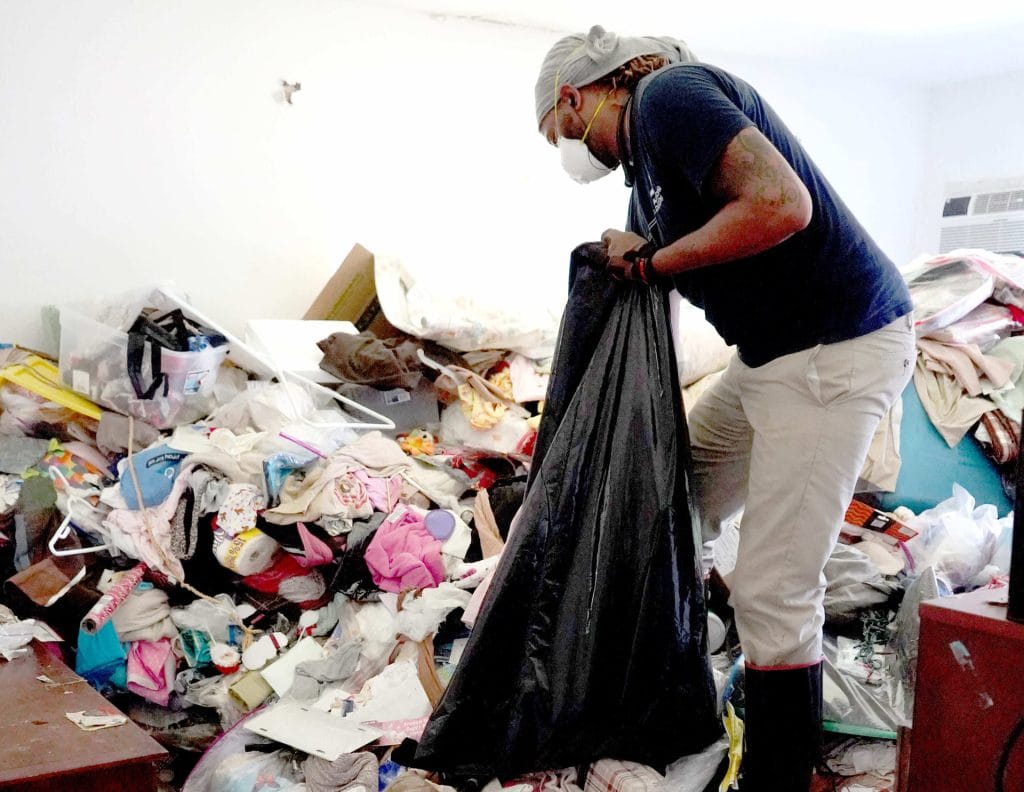
Diogenes Syndrome (Senile Squalor) vs Hoarding
According to the National Center for Biotechnology Information’s (NCBI’s) National Library of Medicine states that Diogenes syndrome involves severe self-neglect, social withdrawal, and squalor. Although hoarding may be present, the core issue is extreme neglect. Older adults are more often affected. Both should be treated as health and safety concerns and medical plus social support should be sought promptly.
Real-Life Example: Watch a Real Transformation in Action
These real-life cleanup videos offer a clear look into how professional hoarding cleanup is done – step by step. In the first episode, our team helps a client sort through a heavily hoarded home, making sure important items are preserved and anything unnecessary is either donated or removed.
The follow-up episode shows the final stages of the cleanup, demonstrating how a trained team can restore a home to safe, livable conditions in just a few days. These cases highlight the importance of a structured, compassionate approach to hoarding recovery.
Find Hoarding Cleaning Help Near You
We offer hoarding cleanup services in over 20 states. To find a Spaulding Decon hoarding cleanup team nearest you: Search by Location (United States)
Speak with a hoarding intervention specialist. We’ll walk you through next steps, and if needed, connect you with a mental health partner in your area.
Free consultation: 866-726-2316
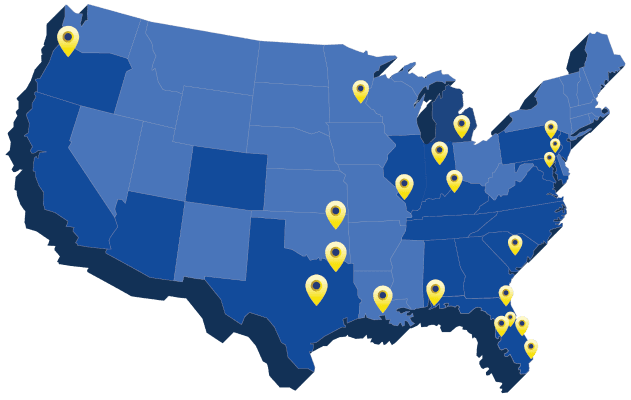
FAQ
Costs vary by level (1–5), square footage, disposal fees, and hazards (e.g. the presence of pests, mold, and biohazards). Level 1–2 cleanups often land in the low four figures, while Level 3–5 cases can run from several thousand to five figures. Call 866-726-2316 for a detailed quote. The average cost is usually $3000-$6000K.
The cleanup process varies based on the amount of accumulated clutter and the level of damage. A small cleanup may take a few hours, while a severe case could take multiple days. We offer customized cleanup plans for each situation.
In most cases, homeowners insurance does not cover hoarding cleanup. However, if the property has experienced structural damage due to mold, pests, or structural hazards, there may be some coverage options. We also offer financing options to make cleanup more affordable.
Junk removal people don’t have experience in dealing with hoarders, and their anxiety. Hire a professional in the hoarding industry.
Our team meticulously documents, photographs, and separates valuable items, sentimental belongings, and essential documents before disposal. We ensure nothing of value is lost during the cleanup process.
Yes. We are certified in biohazard remediation and safely remove mold, animal waste, human waste, expired food, and hazardous materials.
We offer hoarding cleanup services nationwide, with teams available in all major cities and surrounding areas. Check availability in your area.
Yes! We provide same-day and emergency hoarding cleanup in most locations. If you’re dealing with an urgent biohazard, fire risk, or severe clutter situation, call us immediately at 866-726-2316 for 24/7 assistance.
Yes. Hoarding disorder is a recognized mental health condition within obsessive-compulsive and related disorders. Learn more in the IOCDF Hoarding Disorder Fact Sheet (PDF).
A mixture of trauma/grief, anxiety, perfectionism, fear of “needing it later,” and sometimes co-occurring conditions such as depression, ADHD, and OCD.
Start with safety by ensuring clear exits and wearing PPE. Then, set sort zones, work in short blocks, and remove trash first. Lastly, disinfect and deodorize.
At Spaulding Decon, we work closely with the homeowner or their designated representative to locate keepsakes and heirlooms. We also handle sorting, separating donation items from those to keep or discard. If the task feels overwhelming, contact Spaulding Decon for professional hoarding cleanup assistance.
Clutter is usually temporary, and the home remains functional despite some disorganisation. Hoarding, on the other hand, impedes the functionality of the home – for example, you may be unable to cook in your kitchen or use other rooms due to excessive accumulation of items. It often makes living spaces unsafe and is typically accompanied by significant distress or anxiety about discarding possessions.
A term people use for hoarding conditions with liquids/rotting food/leaks, often tied to mold, sewage, or pests. This situation should be treated as a biohazard.
Not exactly. Digital hoarding is the difficulty involved in deleting files/photos/emails, which poses more of a mental overload than an immediate safety risk. Physical hoarding blocks rooms/exits and can involve pests, mold, or biohazards. During cleanup, we can photograph sentimental items so you keep the memory while we reduce the physical clutter. For physical hoarding cleanup and biohazard remediation, contact Spaulding Decon.
Speak with one of our trained hoarding intervention specialists. We’ll walk you through next steps, and if needed, connect you with a mental health partner in your area.
Free consultation: 866-726-2316
Levels of Hoarding Links
